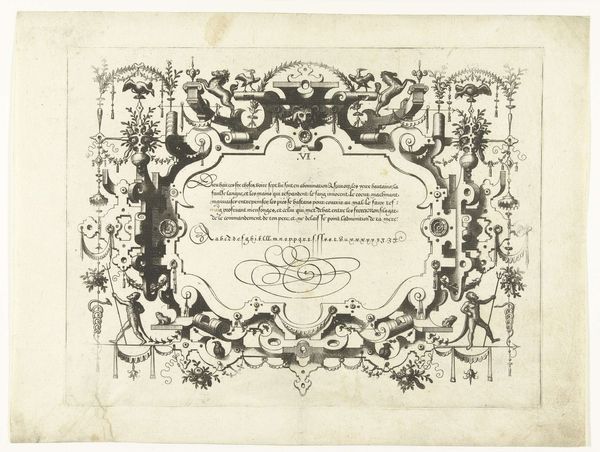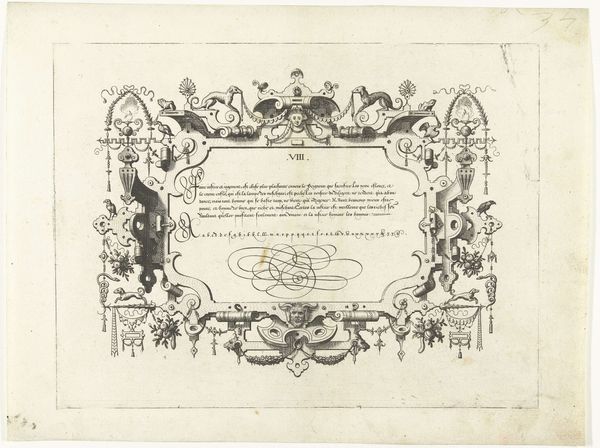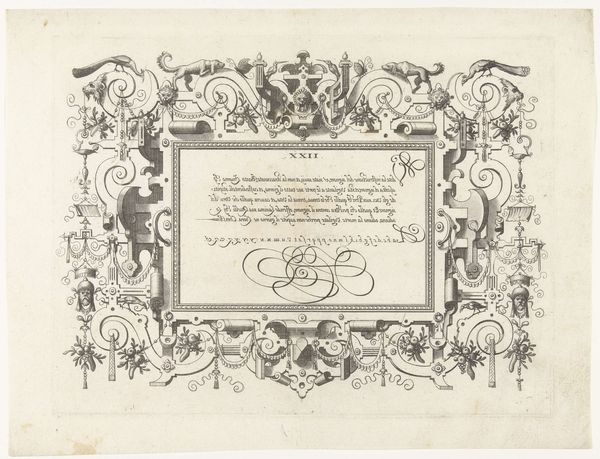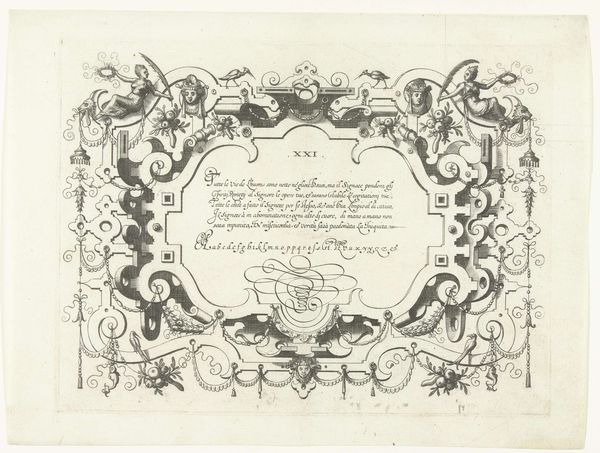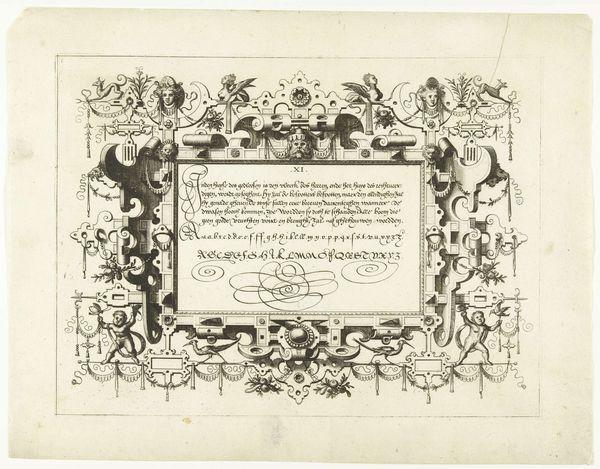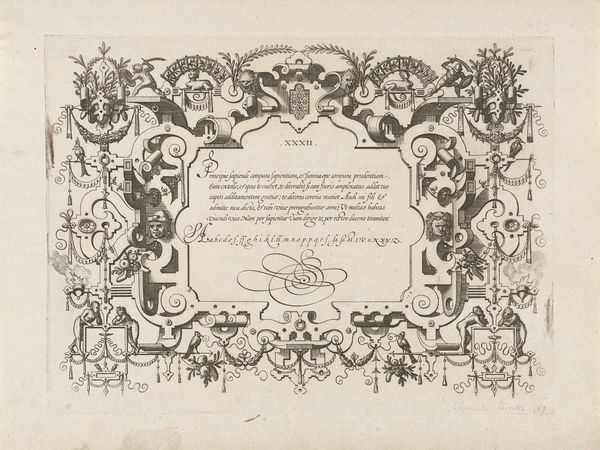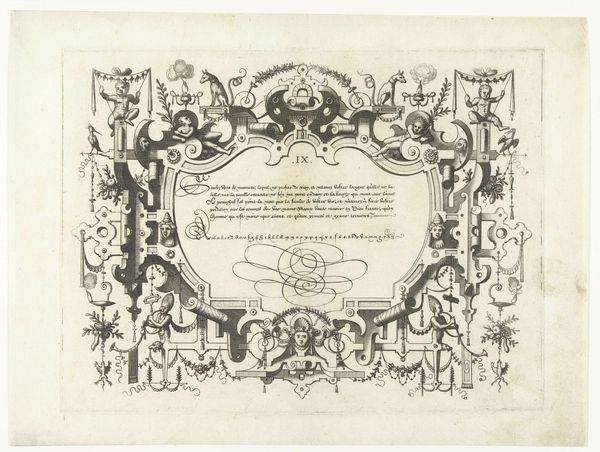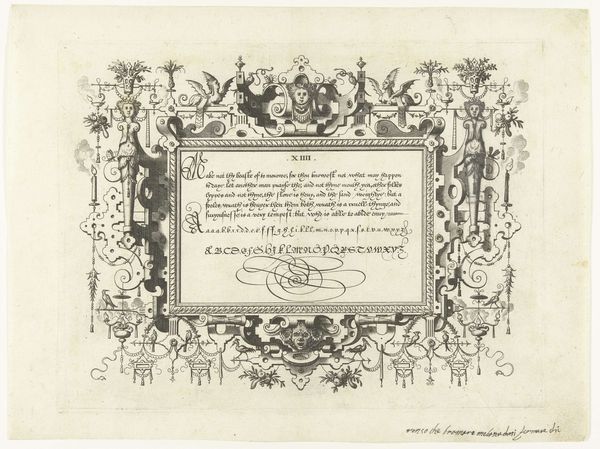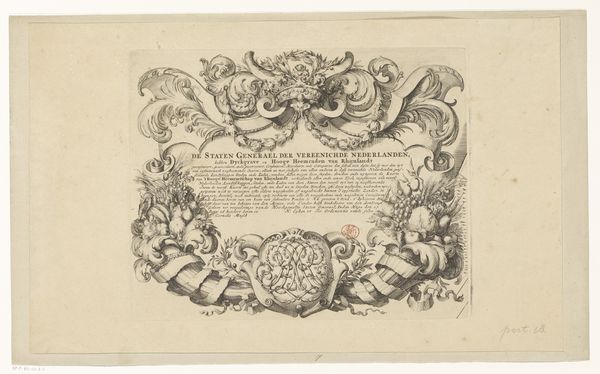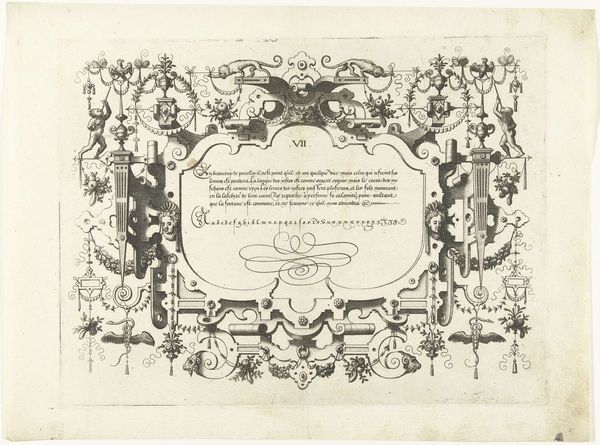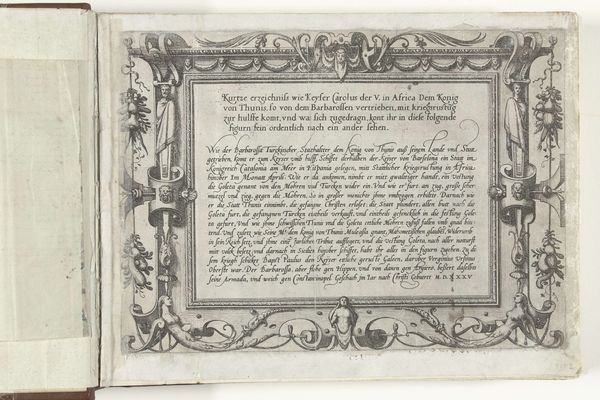
Ovale cartouche met kalligrafie, aan weerszijden een zittende vrouw met een lauwerkrans en palmtak 1569
0:00
0:00
drawing, print, ink, engraving
#
drawing
#
pen drawing
# print
#
pen illustration
#
pen sketch
#
old engraving style
#
figuration
#
11_renaissance
#
personal sketchbook
#
ink
#
pen-ink sketch
#
pen and pencil
#
pen work
#
sketchbook drawing
#
northern-renaissance
#
sketchbook art
#
engraving
#
calligraphy
Dimensions: height 215 mm, width 284 mm
Copyright: Rijks Museum: Open Domain
Curator: This engraving, titled "Ovale cartouche met kalligrafie, aan weerszijden een zittende vrouw met een lauwerkrans en palmtak," was created in 1569 by Johannes or Lucas van Doetechum. It resides here in the Rijksmuseum. What strikes you most about it? Editor: The balance—almost to the point of rigid symmetry—creates a visual sense of stability and perhaps even… order? It's quite formal, and something about the decorative elements feels emotionally weighty. Curator: I think that order is directly tied to the Renaissance ideals the artists worked within. Consider the symmetry as a reflection of humanist beliefs of proportion and balance in life itself. The women, holding the laurel wreath and palm branch, are personifications of victory and peace, right? Perhaps they served as potent allegories for the anxieties of a society steeped in conflict. Editor: Precisely. And the wreaths and branches have ancient roots. The wreath's association with honor and achievement stems from classical antiquity. The palm branch represents triumph, victory, eternal life - but then that calligraphy in the oval disrupts a clean narrative with something indecipherable to modern eyes. Curator: It reminds us that access to knowledge and power was carefully controlled during this period. Only certain people had access to education. The pen itself became a symbol of power and privilege! Who got to wield it, what meanings were they inscribing? What world were they creating by that very act? Editor: That resonates so deeply. The calligraphy transforms what could have been a purely decorative piece into something far more complex. There’s a push and pull here between accessibility and hidden knowledge, visibility and opacity. It embodies the complicated relationship Renaissance society had with both tradition and change. Curator: Absolutely, especially when you consider this piece isn't a painting destined for a grand hall but a print. This medium allowed for the relatively mass distribution of ideas and imagery. Editor: Which loops us back to considering who this piece empowered to begin with, or, was intended to empower. These are lasting visual strategies with real social consequence. Curator: The way the engraving encapsulates prevailing sociopolitical currents continues to challenge our current discourse surrounding visual strategies and their legacy of social impacts. Editor: Indeed, the image serves as a constant visual reminder that symbols don't exist in a vacuum.
Comments
No comments
Be the first to comment and join the conversation on the ultimate creative platform.
